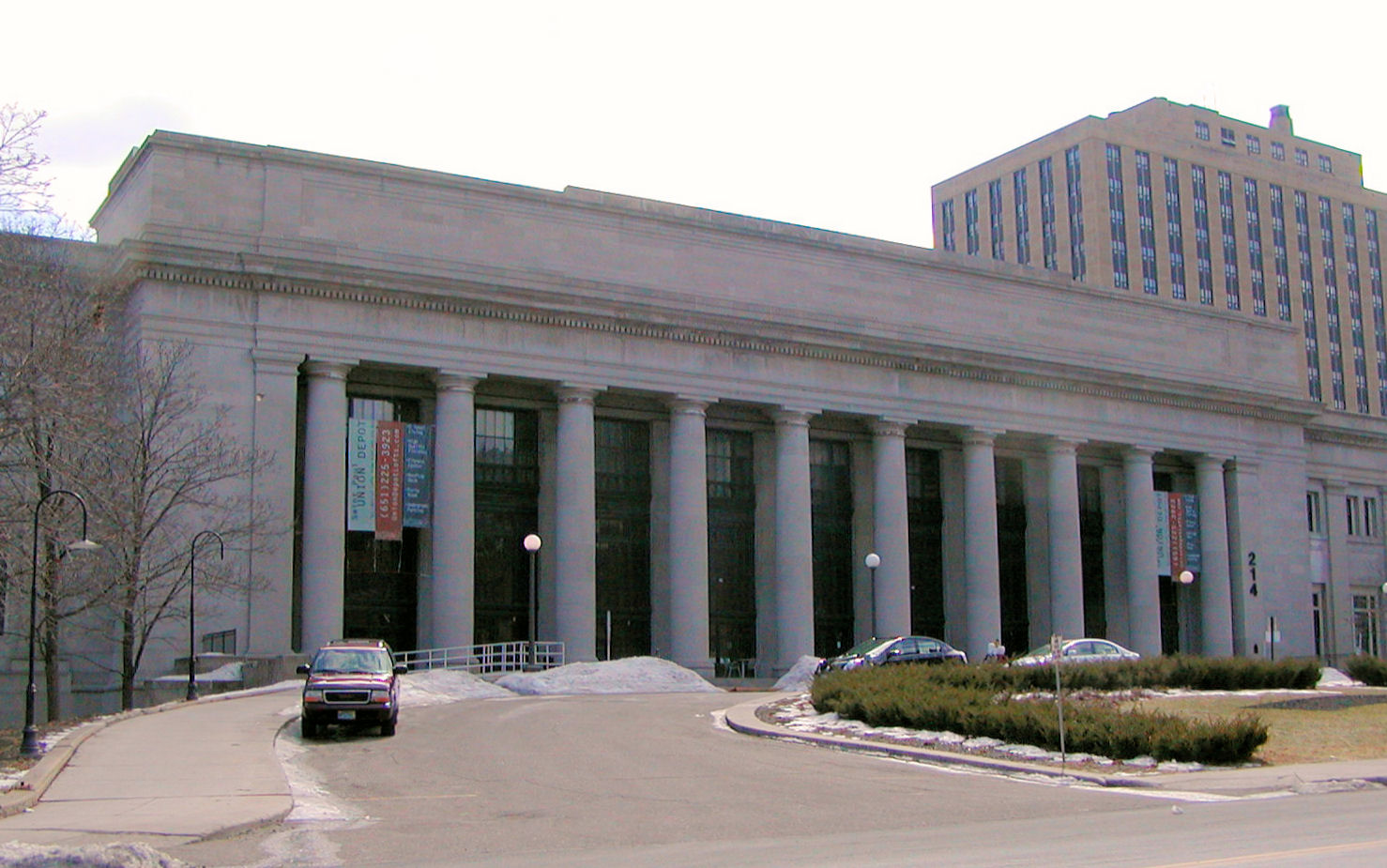- Saint Paul Union Depot
Infobox_nrhp | name =St. Paul Union Depot
nrhp_type =

caption =
location= 214 E. 4th St.St. Paul, Minnesota
lat_degrees = 44 | lat_minutes = 56 | lat_seconds = 52 | lat_direction = N
long_degrees = 93 | long_minutes = 5 | long_seconds = 10 | long_direction = W
area =
built =1917
architect= Charles S. Frost
architecture= Classical Revival
added =December 18 ,1974
locmapin=Minnesota
governing_body = Private
refnum=74001040 cite web|url=http://www.nr.nps.gov/|title=National Register Information System|date=2006-03-15|work=National Register of Historic Places|publisher=National Park Service] The Saint Paul Union Depot (sometimes referred to as SPUD) was the maintrain station in the city ofSaint Paul, Minnesota until passenger rail service in the region was restructured in the 1960s and 1970s, withAmtrak taking over most passenger service in theUnited States . In 1971, Amtrak moved its rail service for the Twin Cities to Midway Station about halfway between the downtowns of Minneapolis and St. Paul. The entrance to Union Depot is considered a somewhat severe example of neoclassicalarchitecture , with a number of tall columns in front. However, the concourse that extends out to platforms where trains once rolled in is considered to be one of the great architectural achievements in the city. The building was added to theNational Register of Historic Places in 1974.The former depot still exists, with a number of businesses using portions of the front area and the
United States Postal Service using the rear train concourse as a staging area forsemi-trailer truck s serving the neighboring post office. The USPS plans to move the current postal services to abulk mail processing center inEagan, Minnesota , which will make way for rehabilitation of the depot as a rail hub.There have actually been two Union Depots in St. Paul. The first was completed in 1881, and combined the services of several different railroads into one building (hence the "union"; see
Union station ). In 1888 the old station had its peak year, handling eight million passengers. That year, about 150 trains departed daily. Around this time, the building was remodeled with a taller central tower and other alterations to theroof line.The current structure was started in 1917, although it was not completed until 1923 because
World War I caused construction to halt for several years.The first
locomotive to run inMinnesota , the "William Crooks ", was once displayed at the depot, though it now resides at a museum in Duluth.Rehabilitation of Union Depot to accommodate modern trains will likely cost $250 to $300 million. Plans are now being examined to incorporate the depot into future
light rail andcommuter rail projects, most likely becoming a transfer point between the proposed Central Corridor andRed Rock Corridor . The station would probably also be used by any high-speed trains that came into the region, possibly as part of theMidwest Regional Rail Initiative . Along with this,bus services would also be incorporated, creating links for local lines like Metro Transit, along with national and regional carriers such asGreyhound Lines andJefferson Lines .Other train depots in the Twin Cities
*
Chicago, Milwaukee, St. Paul and Pacific Depot Freight House and Train Shed - Minneapolis destination for Milwaukee Road, Soo Line, and Rock Island passenger trains
*Midway (Amtrak station) - The current passenger station serving the Twin Cities
*Chicago Great Western Railway Station on south Washington Avenue
*Minneapolis and St. Louis Railway Station on north 5th street
*Minneapolis Great Northern Depot - Former Minneapolis destination for Chicago and Northwestern, Great Northern, and Northern Pacific passenger trainsReferences
*Doug Mack (August 11, 2004). [http://www.professoryeti.com/20040811/features-station.php Goodbye Mail, Hello Rail.] Professor Yeti. Retrieved June 12, 2005.
*Tim Nelson (June 7, 2005). [http://www.twincities.com/mld/pioneerpress/news/local/11831172.htm Post office proposes Eagan move.] "Saint Paul Pioneer Press ". Retrieved June 12, 2005.
Wikimedia Foundation. 2010.
